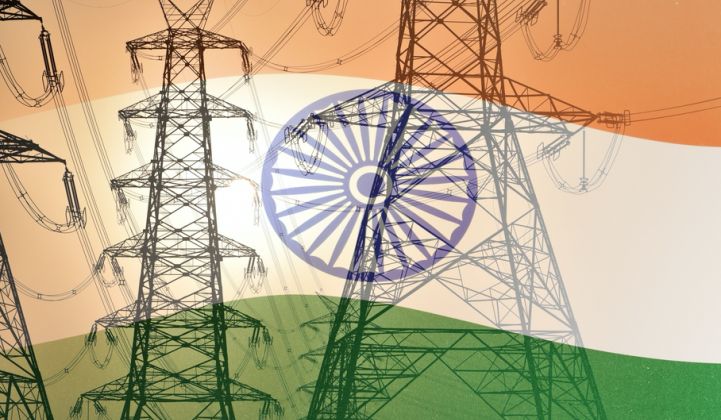India has launched its first grid-scale battery storage system amid ambitious plans to integrate 175 gigawatts of renewable energy into the power system by 2022.
Commissioned and operated by Tata Power Delhi Distribution, the 10-megawatt Advancion energy storage array is a joint project by Mitsubishi and the U.S. energy storage company AES.
Designed for peak load management, the project couldn’t have come at a better time for India, said to Logan Goldie-Scot, an energy storage expert at Bloomberg New Energy Finance.
“India could add 10 gigawatts of renewables every year from 2017,” he said. “Rooftop solar is becoming the fastest-growing segment in the renewable sector due to strong demand from commercial and industrial users.”
The country is also investing in a number of energy mega-projects, and currently boasts the world’s biggest solar farm, a 648-megawatt plant in Kamuthi, Tamil Nadu.
At the same time, though, its electrical infrastructure is fragile -- and the burgeoning industrial sector and growing middle class are increasingly demanding reliable power.
In addition, India does not have many natural-gas power plants that act as backup on the grid.
“Storage is relatively more crucial for the growth of renewables in India as compared to many other countries, as India does not have a lot of gas-based power generation to balance the grid,” said Jasmeet Khurana, associate director of the consultancy Bridge to India.
Multiple procurement tenders for energy storage to balance the grid or back up solar projects have been floated across India, Khurana noted.
“Even though the requirement for an energy storage component in such procurements has been small and experimental, they have managed to attract serious investor interest,” he said. “As renewable tariffs and energy storage costs decline, penetration of both renewables and storage is bound to increase.”
BNEF’s Goldie-Scot estimates 800 megawatts of storage could be commissioned by 2020 in India.
This doesn’t include pumped hydro energy storage, however. India’s Central Electricity Authority (CEA) has claimed 100 gigawatts of PHES will eventually be constructed in the country -- with 10 gigawatts slated to come on-line in the next five years.
This goal may be too optimistic. India has limited sites suitable for pumped hydro’s vast reservoirs. And many projects would need to be co-located with renewable generation, due to the shortcomings of India’s grid infrastructure.
However, CEA’s ambitious goal indicates that energy authorities realize the importance of developing tens of gigawatts of energy storage in order to make India’s solar dream a reality.
Currently, solar-plus-storage is not competitive with coal, India’s top energy resource. However, as pressure builds for environmental restrictions on coal, experts expect renewable energy to gain an advantage.
India now looks set to become the world’s third-biggest solar nation after China and the U.S., with 9 gigawatts predicted to come on-line in 2017 alone. If the country’s commitment to energy storage follows a similar trajectory, there could soon be hundreds of megawatts -- and then gigawatts -- of storage installed.



